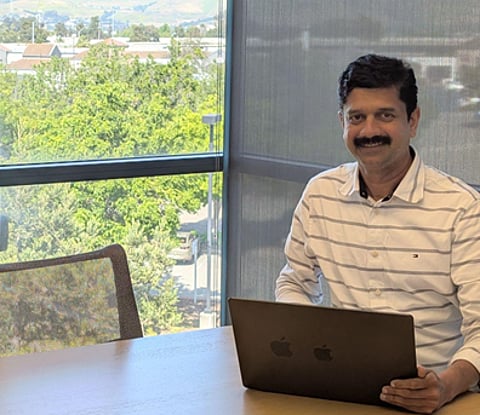

The enterprise software market only has a few technologies that demonstrate both technical sophistication and business value so effectively that they become acquisition targets. Truvantage, a data-driven analytics platform engineered by Josson Paul Kalapparambath and his team at Saggezza, did exactly that, powering insights for financial institutions, scaling across clients, and ultimately becoming a key asset in Cisco’s acquisition of the company.
Kalapparambath, a technologist with deep expertise in distributed systems and data infrastructure, served as the technical lead behind Truvantage’s engine: LubeInsights. His approach combined engineering precision with strategic foresight. “It’s not just about building software that runs,” Kalapparambath notes. “It’s about building software that evolves with the business, and adds measurable value at every layer.”
Launched in 2014, Truvantage was one of the earliest SSAE 16-certified, cloud-based analytics platforms tailored for small and mid-sized financial institutions. The aim was simple: combine technical tools that provide data insights for under-resourced teams as good as enterprise-level companies get. From that vision sprung LubeInsights, the backend architecture led by Josson from design to scale.
This platform operated on a distributed compute engine fueled by Apache Spark and Drill, designed for ETL scheduling, high-volume batch jobs, and real-time machine learning (ML). Kalapparambath's architectural solution is a high-performance query layer that can run standard analytics and complex adaptive AI workloads while maximizing resilience, volume (how many data scientist users can use the platform concurrently), and modular configurability for data scientists.
He also engineered a configurable UI layer to allow low-code interaction with the ML stack, removing technical bottlenecks and enabling business users to engage directly with insights. The result was an analytics platform that could surface actionable intelligence faster than competing solutions, and one that supported seamless growth.
What made Truvantage unique was about more than its technical architecture, it was about business alignment. The systems' core capabilities of predictive analytics, financial modeling and customer behavior mapping produced multi-million dollars in revenue for Saggezza. Sure, Kalapparambath was instrumental in the development of Truvantage and also in some of the positioning during Cisco's due diligence.
As the single point of contact for both LubeInsights and the underlying security architecture assets, Kalapparambath ensured that the platform was evaluated in a technical due diligence process with the utmost rigor. He led the architecture walk-throughs, incorporated compliance validations (e.g. SSAE 16 certification), translated the modularity of the system into an enterprise-scalability roadmap, all while providing a unique architecture and intellectual agility regarding Cisco's enterprise ecosystem. The acquisition of Truvantage was not just a commercial acquisition, it was a win for engineers.
Today, the press coverage stands as testament to the deal’s impact: Cisco strengthened its analytics footprint, Saggezza achieved scale, and Kalapparambath’s platform became part of a global innovation engine.
Security and compliance were a large part of Kalapparambath’s engineering mindset. LubeInsights was certified Powered by SAP HANA and went through the rigorous SSAE 16 standard, ensuring that enterprise level reliability. Kalapparambath had security monitoring, vulnerability scanning, and compliance frameworks, from the very first build, believing in what would become critical requirements at the time of acquisition.
His role as a Senior IEEE panel reviewer further reflects this ethos. Kalapparambath evaluates technical submissions on advanced data platforms, enterprise security, and predictive modeling, bringing his frontline expertise to shape global engineering standards.
He says, “Compliance isn’t a milestone, it’s a design principle. You can’t tack on trust; you have to engineer for it from day one.”
Beyond revenue and compliance, Kalapparambath’s impact was most visible through client outcomes. Truvantage helped regional banks and financial institutions generate deeper customer insights, accelerate decision cycles, and compete more effectively with large-scale players. These real-world results, covered by outlets like PRnewsWire and CIOReview, demonstrate how technical platforms can directly power economic resilience.
Kalapparambath’s team even earned recognition as one of six finalists at NACUSO’s Next Big Idea Competition, where Truvantage was featured for its strategic innovation and tangible client impact.
Kalapparambath continues to shape the future of analytics. His recent scholarly paper, “GenAI-Powered Analytics in Software Development: Redefining Data Engineering and Security Practices”, explores the intersection of generative AI, data governance, and scalable system design.
As AI adoption deepens, Kalapparambath sees predictive analytics becoming more adaptive and intuitive. “We’re moving from dashboards to decisions,” he says. “The real frontier is in platforms that surface answers, not just data.”
His past press feature on IndieHackers echoes this vision, highlighting Kalapparambath’s belief that systems must prioritize trust, performance, and strategic insight to thrive in competitive markets.
For engineering leaders aiming to scale real impact, Kalapparambath’s journey offers a roadmap: technical excellence, grounded in business reality.
